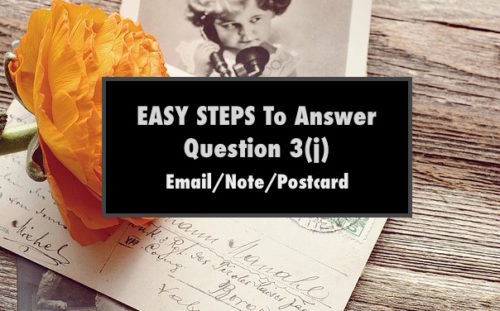Previously, I’ve posted an entry on How to start and end question 3(J) and it’s been well received and I’ve also gotten some valuable feedbacks from our readers. I also mentioned that I might share with you a cycle that I normally introduce to my learners. So, why not now? The test is closer now that it is July, I am sure you guys are feeling more anxious now. Maybe this could help you.
*The usefulness of this cycle is very subjective, if you do not think it will work with your learners, I welcome you to write to me and we can chat 🙂
PT3 Papers have certain ways of constructing this question. There is almost a pattern in the things they ask for.
In almost all the question types that have been asked out there, you will most probably be asked to :
- invite/suggest/recommend
- give 1 or more reasons
- encourage someone to take action
It does not run away from this. Therefore, all you need to do is to link all of them together and try to make your writing sound as natural and interesting as you can.
In my previous post How to start and end question 3(J), I have explained how you can start and end with some ready-to-go phrases.
In here you will find some more help for you to go about with your content:
INTENTION
- This is to make sure you are on the right direction. It also helps you to make sure you answer the question.
REASONS
- It is very important that you give AT LEAST 2 reasons to show that you understand what the question asks.
- In 2017, the question changed its format and ASK FOR ONLY 1 REASON. It killed many students and it showed that many students either don’t read the question properly or don’t understand the difference between ‘REASONS’ and ‘REASON’
- As TEACHERS , it’s extremely important to brief your students on this and make it a point for them to READ the questions. EVERY QUESTION should be READ and DISSECTED!
- Use connecting words to help arrange your points.
- Some suggested sentence starters are there to help you build around the notes given from given text.
- REASON 3 is optional but highly recommended if you feel that you don’t have much to say
- Here are some very useful sentences I introduce to my student:
- I know you like ______ right?
- You are going to love it.
- We can have fun together.
- We can take a lot of pictures there.
- What are you waiting for? Come and join me.
These may sound simple but they could be life saver for your weaker groups. They feel more confident when they have some sentences up their sleeve.
Just remind them try not to repeat the same sentence too often.
ENCOURAGEMENT
- They always ask for this in the question. If you worry your students can’t understand the word, make it a point for them to write this in. I mean, it can’t be wrong, can it?
PEN OFF
- Just a sentence to end the whole writing.
The picture below may help you to better understand what I am talking about here:
From my experience, students feel less lost when they have a guideline like this.
The positive side of it:
- It comes most useful with the weaker groups. They will be able to come up with something instead of nothing.
- Some students like playing safe. This is SAFE.
- They write quicker. Once they get used to the pattern, it’s faster for them to get it done.
- Avoid a lot of weird language (grammar and tenses comedy)
The negative side of it:
- You take away students’ creativity. They might stick with your samples language. If you want genuine products from them, this might not be what you’re looking for.
- Expect a lot of similar answers. But hey, if it gets them to the shore, why not?
- Also, many will still get it wrong. I’ve seen many learners still not able to connect the phrases into meaningful language. For this, I’m still looking for ways to help them, any ideas from you?






9 thoughts on “Fast and Easy ways to write your Email/Note/Postcard: Question 3(J)”
Very useful indeed as were the others you have sent. Thank you Grace.
Kudos to a wonderful teacher for her refreshing ideas. Much thought too given to cater to different set of students. Keep up the good work. May God bless you with more great sharings.
Thank you so much for your updates. This is the best site that supports tchrs and i appreciate yiur prompt replies and guides!!
Santhimuru,
Appreciate your kind words! Let’s spread the love! 🙂
this is so useful. even advance students need base guideline. thanks so much
This is waaaaayy helpful than looking at those emails on the guidebooks
appreciate your kind words!
appreciate your kind words! however, with the implementation of the new format, we’re going to change the content of this post to better fit the new requirements of the new format. stay tuned!
Thanks. Easy way. May I share to my students?